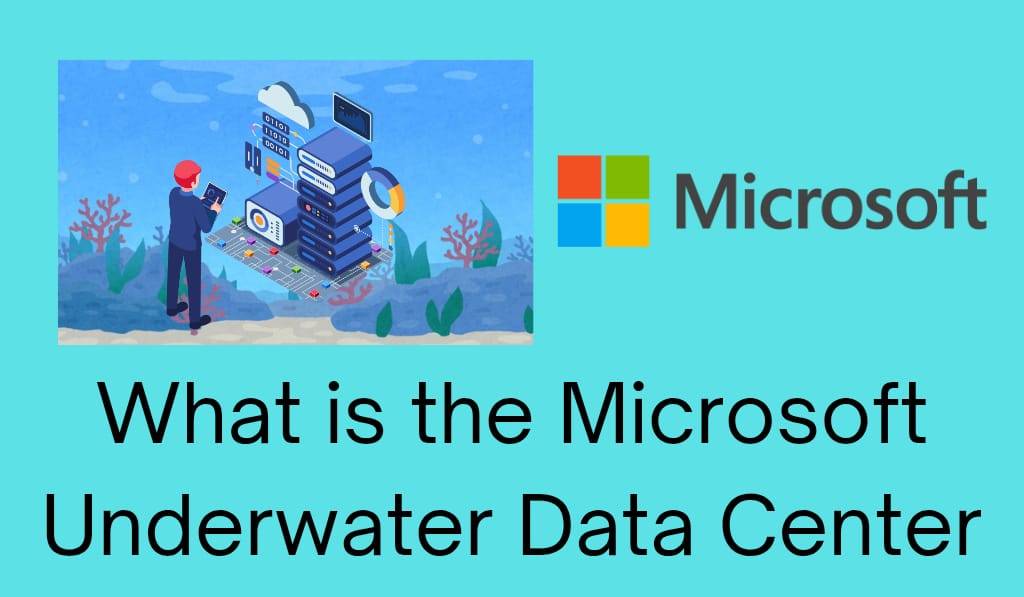In This Guide, we explore the Microsoft Underwater Data Center, and we will explain how it functions, what the benefits and issues that come with it and how it may play a role in the future of cloud computing.
Microsoft’s Underwater Data Center
Microsoft has been at the head of tech change with its innovations. They have, in fact, put forth what may seem a product of science fiction but is very much a reality with the Microsoft Underwater Data Center, which they have put forward as a sustainable, efficient, and very forward-thinking design. This project, which has already seen success in its testing phase, brings to life what was once only seen in the pages of a science fiction novel.
Read More: How to Apply for a Microsoft Refund Request
Introduction to Microsoft Underwater Data Center
The Microsoft Underwater Data Center is part of Microsoft’s Project Natick, which is to study how we may operate data centers in extreme environments. Instead of land-based giant server farms, we see Microsoft put a fully functional data center in the deep ocean. To tap into the ocean’s natural air conditioning, save energy, and at the same time improve the reliability of cloud computing systems.
Read More: Establish Your Microsoft 365 Career by Passing Microsoft MS-900 Exam Using Practice Tests
Why Was the Microsoft Underwater Data Center Created?
Traditional land-based data centers use large quantities of electrical power in particularly for the issue of cooling. As more and more people access cloud services daily, we are seeing a growth in that energy demand. The Microsoft Underwater Data Center was developed to deal with which, at present, are three primary issues.
- Cooling Solution: We put the data center in the ocean, which in turn provides natural cooling, which in turn reduces the use of air conditioners.
- Sustainability: By reducing energy use, we see a drop in carbon emissions, which in turn makes the data center more eco-friendly.
- Reliability: Sealed out of water also does not do well in terms of physical damage, high temperature, or dust issues.
First Microsoft Underwater Data Center Experiment
In 2015, Microsoft put to the test in the waters off California the first of its Underwater Data Centers. That capsule-like structure ran for several months. Also inspired by that success in 2018, Microsoft put forth a larger-scale project which took root in the Orkney Islands of Scotland.
This new Microsoft Underwater data center, which had 864 servers reported to have run for a period of two years and at the same time was powered fully by renewable energy. What we saw was very surprising the server failure rate was that of which is lower in comparison to land-based data centers.
Key Results of the Microsoft Underwater Data Center Project
Microsoft’s results from the Underwater Data Center experiment proved that the scale was possible.
- Underwater servers experienced a failure rate of almost 1/8 that of land data centers.
- Cooling, which was done by the surrounding seawater, also reduced energy use.
- The system required little maintenance as the capsule was sealed against dust, oxygen, and human interaction.
- It has achieved success with renewable energy, which in turn proves that sustainability and high performance are not at odds.
Benefits of Microsoft Underwater Data Center
Some of what we have seen from the Microsoft Underwater Data Center is that it offers up:.
1. Energy conservation
We see a large-scale reduction in cooling, which in turn reduces electricity use.
2. Eco-efficient
The operation runs on renewable energy and has reduced its carbon footprint.
3. Higher Reliability
We report fewer outages in our data centers as compared to traditional ones.
4. Faster Connections
Coastal underwater centers which bring the infrastructure closer to the user.
Issues faced by Microsoft’s underwater data center
During the experiment, we saw success but also present issues of:.
- Maintenance: Repairing Underwater servers is are more difficult task than on land
- High up-front Costs: We see these centers’ development as a large investment.
- Environmental Issues: While Microsoft did put a great deal of thought into the design that it went forward with, we are still seeing issues related to the long-term health of marine life.
Microsoft’s Future of Underwater Data Centers
Microsoft reports that the future of cloud computing is very bright for the Underwater Data Centers. As we see an increase in data that is to be stored, we will probably see more of this green and very effective solution. Also, at this time, Microsoft is into the research of the large-scale implementation, economic aspect, and global push of the underwater data centers.
Conclusion
Microsoft has put forth a very forward-thinking concept, which is that of technology and sustainability coming together in the Microsoft Underwater Data Center. By using the sea cooling resources, we see a reduction in energy use, an increase in reliability, and a look into what is to come in the world of data storage. Though there are issues that still stand, Microsoft’s project has reported that what was at first an experiment is in fact a move towards a better, smarter future.
Leave a Reply